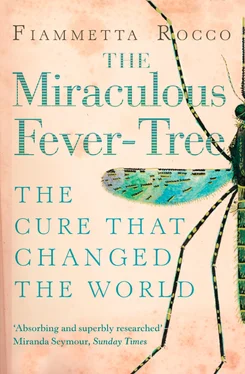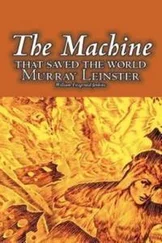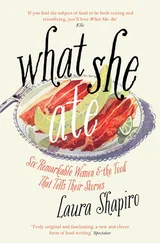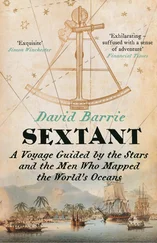My grandfather, for his part, was born in Naples but spent much of his childhood staying with an aunt who lived in the hills of Maremma. To many, this part of Tuscany was known as ‘la Maremmamara’ – bitter Maremma – because of how malaria had forced people to abandon the land in the eighteenth and nineteenth centuries. Another aunt lived in the Roman Campagna, where malaria had existed since Roman times, and from which it was not wholly stamped out until the 1930s, when Mussolini embarked on draining the Pontine marshes at the mouth of the Tiber, thus ridding western Italy of the pools of stagnant water in which the malaria-carrying mosquitoes bred.
In truth, the whole of southern Italy in summer was a hellhole of malaria. Travelling through the region in 1847 on his way to Sicily, Edward Lear, the artist and poet whose children’s verse usually speaks lovingly of the oddities across the seas, noted in an unusually serious vein that malaria turned the population yellow and shrivelled many to living skeletons. ‘After May,’ he wrote in a letter to his brother in the spring of that year, ‘the whole of this wide and fertile tract … is not habitable, and in July and August to sleep [i.e. to die] there is almost certainly the consequence of fever.’
George Gissing, who made the same journey nearly sixty years later, wrote in his Calabrian classic By the Ionian Sea of the amiable Dr Sculco, who advised him to ‘get to bed and take my quinine in dosi forti. [Was I not] aware that the country is in great part pestilential [because of] la febbre ?’ Of course, Gissing, Lear and the other foreign writers who journeyed to the south of Italy could always leave if things got too bad. For the innkeeper in Giovanni Verga’s nineteenth-century short story ‘Malaria’ there was no such option. First came the railway, which took away the brisk business he’d enjoyed from the carriage trade. Then it was the malaria that struck, bearing away each of his four wives in turn, earning him the nickname ‘Wifekiller’. When none of the village girls would consent to become his fifth bride, he said to himself, ‘Next time I’ll be taking a wife who’s immune to the malaria. I won’t go through all this again.’ But it was not to be.
‘The fact is,’ wrote Verga, ‘that malaria enters your bones with the bread that you eat and whenever you open your mouth to speak … The malaria fells the townspeople in the deserted streets, it pins them down in the doorway of houses whose plaster is peeling in the sun, as they shudder from the fever, wrapped up in their overcoats, and with all the blankets from their beds round their shoulders.’
Massimo Taparelli, the writer and statesman who, as Marchese d’Azeglio, served as Prime Minister of Italy under King Victor-Emmanuel II, often mentioned the disease in his diaries. ‘While we were staying at Castel Gandolfo [the Pope’s summer home],’ he wrote on one occasion in 1860, ‘I used to go down to the plain to shoot. But instead of birds I got the terrible marsh fever, the ancient scourge of Latium …
‘No one can have any idea of the iciness of the cold phase or the burning heat of the hot attack of these painful fevers. Quinine is certainly the most beneficent discovery for the Roman Campagna. There may be no steam there, no newspapers, no other modern inventions but at least they have quinine, and that’s worth all the rest put together.’
When my grandfather was growing up, everyone in southern Italy regularly took quinine in the summer, when the danger of catching malaria was at its worst.
My grandfather saw his African safari as just the start of a grand adventure that would take him and my grandmother around the world. ‘From here, we shall travel on, to Dar es Salaam, to Beira and then around the Cape to Rio de Janeiro,’ he wrote to his mother as they arrived in Africa in February 1929. They never left. Later that year my grandmother, who had already lost her first baby in childbirth, became pregnant again. Already thirty-seven, she wanted to take no risks a second time. The couple returned to Nairobi to await her confinement.
While she was in hospital, Mario took off in a small plane to look for a friend they had made during their months in the Congo. Before the end of the day he ran out of fuel and crash-landed by the shores of Lake Naivasha, about seventy-five miles from Nairobi on the shady floor of the Rift Valley. A grizzled Englishman, who introduced himself as Harvey, hailed him when he climbed, unhurt, from the wreckage. Mr Harvey took him back to his house, a bungalow with a mottled thatch roof, where after several stiff drinks and a lot of talk he offered to sell Mario his property. Hurrying back to Nairobi to tell Giselle, Mario stopped at the telegraph office to send a cable to his father-in-law, who would be putting up the purchase price.
That telegram was sent more than seventy years ago, and I have it here before me as I write. Its blue folds are as soft as a baby’s cheek, and the pages quite floppy with being taken out and put away so many times. It is addressed, in brief telegraph-speak, to ‘Bunovarila, 1 Grande Chaumiere, Paris’. And it says: ‘Purchased shamba Naivasha 3000 acress [sic] three miles lake front. 5000 pounds. 2000 cash, balance three years. Best bargain. Cable if you want me home to fix everything or cable approval.’
By the time Mario and Giselle decided to stay in Africa on the farm by the shores of Lake Naivasha, the supply of little packets of quinine sulphate they had brought with them in 1929 had long since been used up. Neither of them had caught malaria in the Congo; only heatstroke. But in 1936 Mario came down with a bad attack as he returned from a trip to Lake Victoria, a notorious malarial spot even today. In 1940, just after the start of the Second World War, he had another attack while he was in a British internment camp in Nairobi.
As an Italian, Mario had been arrested as soon as war broke out in September 1939. Giselle, a French national, was allowed to remain on the farm, where she turned her attention from sculpture to raising pigs, as well as to my father and his two sisters. She stayed in touch with her family in Paris, and though the seaborne post was slow, it did its work. Once a month, sometimes more often, a postal vessel docked at Mombasa and a few days later my grandmother received a delivery of letters, newspapers and parcels from Europe, which contained among other things regular supplies of quinine for all the family. And, if she was lucky, there might also be a letter from my grandfather.
I found those letters in an old shoebox the morning after Mario died in 1976. For more than a quarter of a century he had kept them under his bed. Lonely, frustrated and often sick in the internment camp, he longed for home. His letters were restricted by the camp authorities to a single sheet of paper, and over time he perfected the tiniest, neatest handwriting you ever saw, so that he could write first in one direction and then at right angles over the page, stretching out for as long as he could the connection with his family. ‘I dreamed last night that you were sitting by my bed,’ he wrote to Giselle in the winter of 1943 after a bad attack of malaria. By then he had been interned for nearly four years. ‘Nothing would heal me more quickly than to feel your hand upon my cheek.’
Through the war years Mario fell ill several times with malaria. ‘I don’t know what is worse; the fever or the shivering,’ he wrote. ‘There is no quinine. Cold water is the best we can hope for.’ Beyond the heartache and the loneliness there was a cold reality about malaria in Africa that is as relevant now as it was then. With access to efficient anti-malarial drugs, Giselle and her children remained healthy. Mario, who like so many Africans today did not have the medicines he needed, did not.
Читать дальше











